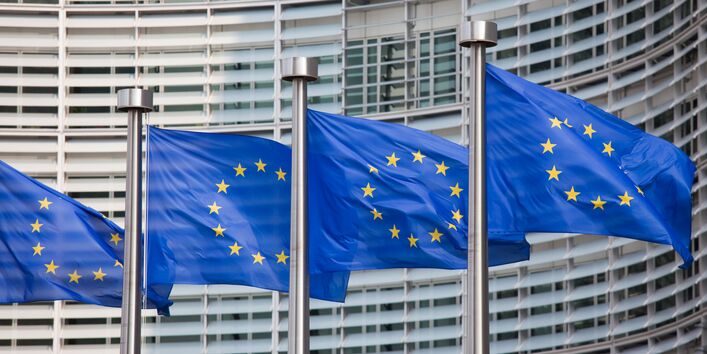EU climate targets: 60 percent reduction of greenhouse gas emissions by 2030 is possible, German Environment Agency says
The German Environment Agency (UBA) believes it is possible to reduce greenhouse gas emissions in the EU by at least 60 percent below 1990 levels by 2030. A key element in this is a rapid reform of EU emissions trading. "Emissions trading is one of the most efficient EU climate protection instruments available and a large part of the emission reductions required by 2030 can and should be achieved through it. However, at the same time, larger emission reductions are needed in the buildings and transport sectors, which are not covered by EU emissions trading," said UBA President Dirk Messner. In September 2020, the European Commission proposed to cut EU greenhouse gas emissions by at least 55 percent below 1990 levels by 2030. The EU Commission intends to propose the necessary implementation instruments by mid-2021. In a new contribution to the discussion, UBA presents several options on how to achieve reductions in Europe of at least 60 percent by 2030. The proposals concern both EU emissions trading and areas not covered by the trading scheme, such as buildings and transport. This scientific initiative by UBA is not intended as a contribution to the German Council Presidency.
With an overall EU target of minus 60 percent compared to 1990, UBA estimates that emissions from industrial and power plants participating in the emissions trading system would have to be reduced by at least 66 to 71 percent by 2030 (compared to 2005). UBA President Messner considers this initially disproportionate contribution of classic emissions trading to be quite realistic, saying, "The actual emissions of the energy sector and industry have for many years been well below the upper limit set in EU emissions trading. This cap must be adjusted to a more ambitious EU climate target for 2030. This could be implemented in the short term by reducing the number of allowances that are auctioned. Planning certainty for companies is important here.”
However, sectors not previously covered by emissions trading – in particular transport and buildings, commerce, some industrial sectors and agriculture – also need to make a more substantial contribution than they have in the past. At present, they account for around 60% of emissions across the EU. One possibility is to introduce emissions trading for fuels such as petrol, diesel, gas or oil. Emissions trading for fuels would help to reduce those emissions cost-effectively and reliably across Europe. It would also generate substantial financial resources that governments could use to encourage climate-friendly investment. A solidarity-based distribution of funds within the EU is another important consideration.
UBA emphasizes that a clear distinction must be made at the outset between the traditional EU emissions trading sectors (energy and industry) and the new sectors (especially buildings and transport). Failing this, there is a risk that reductions will occur primarily in the traditional sectors, where emissions reductions are currently cheaper. A single system would therefore not initially provide sufficient financial incentives to move away from climate-damaging technologies in buildings and mobility.
In parallel with the expansion of emissions trading, European targets such as tighter fleet limits for cars or heavy goods vehicles or a significantly accelerated renovation of existing buildings should provide binding incentives to reduce emissions. "We need a well-coordinated mix of instruments for the buildings and transport sectors. In addition to emissions trading, this includes a clever mix of regulatory and fiscal instruments, such as the promotion of energy upgrades for buildings," said UBA President Messner. UBA therefore supports the legislative package announced by the EU Commission for the first half of 2021 to make the EU better prepared for more ambitious climate action by 2030.
Another option for more climate action in the EU would be to adjust the individual national emissions budgets of all Member States to a new EU climate target. This would require a stronger EU climate target to be redistributed to all Member States. However, UBA believes the negotiation of such a new commitment could be very time consuming. A gap-filling mechanism which would give Member States financial incentives from the EU to adopt more ambitious climate policy could also be considered. However, sufficient funding would have to be made available through EU funds as well as ensuring that windfall profits and missed targets are avoided.

